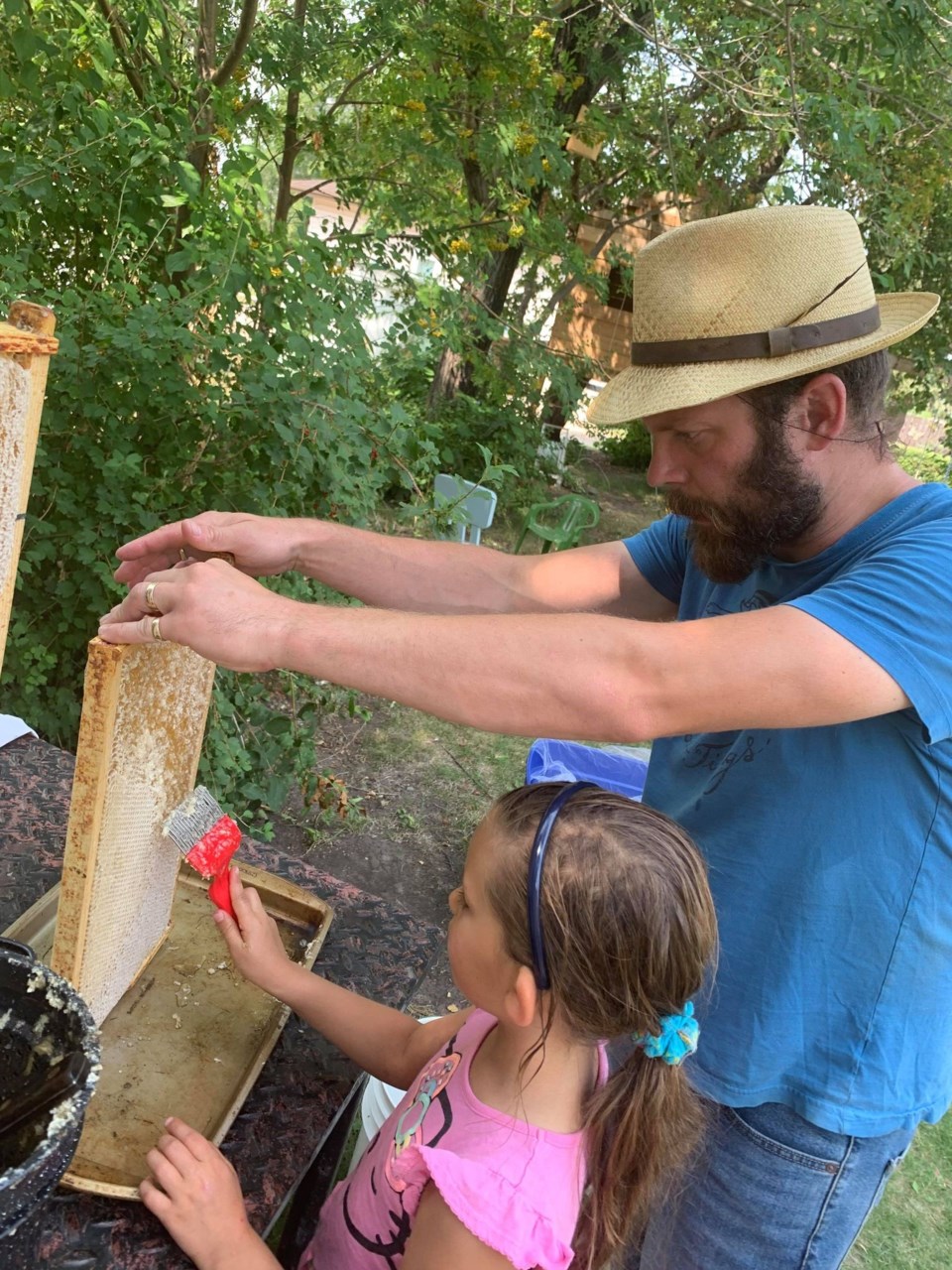YORKTON - This year we moved our “bee garden” into the middle of the garden, a spot where it is sunny almost all day. In previous years, our attempts to help the bees did not pan out as we hoped; the previous bee garden was in a more shaded location, and the flowers never really amounted to much.
But the new location is much better, yielding not only lovely flowers that add to the look of the garden, but also a happy spot for bees to visit.
It’s not a big area, but it helps the bees, and we can all do that, even in a small garden. What do bees need? Bees need flowers that give pollen and nectar, vital for their diets. Bees love blue or purple flowers, and this year they have been buzzing very happily around our salvia and veronica plants. Usually we deadhead, but even though the blooms on some of these plants might look like they are fading, we still see bees, so we are leaving them alone. Bees like flowers that they can reach with their tongues; sometime trumpet-type blooms, like hosta flowers or snapdragons, are what they enjoy, but smaller bees like flowers like the flowers from herbs such as oregano. (Just a note: oregano is a perennial that is perfect for drying, perfect for pizza and soups, and perfect for attracting bees to the garden! The small, frothy mauve-white flowers are beautiful on their own, but even more so when you hear the gentle buzz of bees among the blooms). Bees also love cosmos and poppies, and the beautiful blue star-shaped flowers of borage. And of course, be sure that the flowers are not sprayed by any kind of pesticide.
If you want to make a ‘favourite-flower-list” for bees, include these lovely choices: borage, oregano, chives, salvia, veronica, hosta blooms, allium, catmint, perennial aster, zinnias, sunflowers, verbena, calendula, goldenrod, and bee balm. Bee balm, monarda, is not that common in flower gardens here, but the bees love that too, so if you plant it, they will come!
It’s important to remember that bees need water, and they also need a safe spot to live. Not all bees live in hives in colonies; they might live in small cavities in trees, hollow plant stems, or even in holes in the ground.
We all know that bee populations are struggling, so it is great if we can help them out in whatever way we can. Did you know that one in three bites of food that we eat is made possible because of the hard work of bees? And work hard they do! Here’s a little factoid:
bees can visit as many as 5000 blooms in one day! And that’s not counting travel time! Even more astonishing is that if a hive of bees makes one pound of honey, it has to visit two million flowers and travel over 55,000 miles to do it! That should make us treasure honey even more.
The bees are not the only living things that benefit from a bee garden. Even two or three short rows of mixed flowers will help the bees, but we can enjoy their splendor in the garden, as they provide beautiful color and material for a cutting garden. The fragrance is lovely. And the hypnotic sound for the bees buzzing on a summer afternoon is simply wonderful.
Make a note in your garden notebook and leave a space for a bee garden next summer! Visit the hort society at www.yorktonhort.ca and see some great photos of our fruit, flower and vegetable show, as well as other gardening news. Thank you to our friends at YTW for their great work, each and every week. Have a good week, and if you’re out in your garden, be sure to wear a hat!






